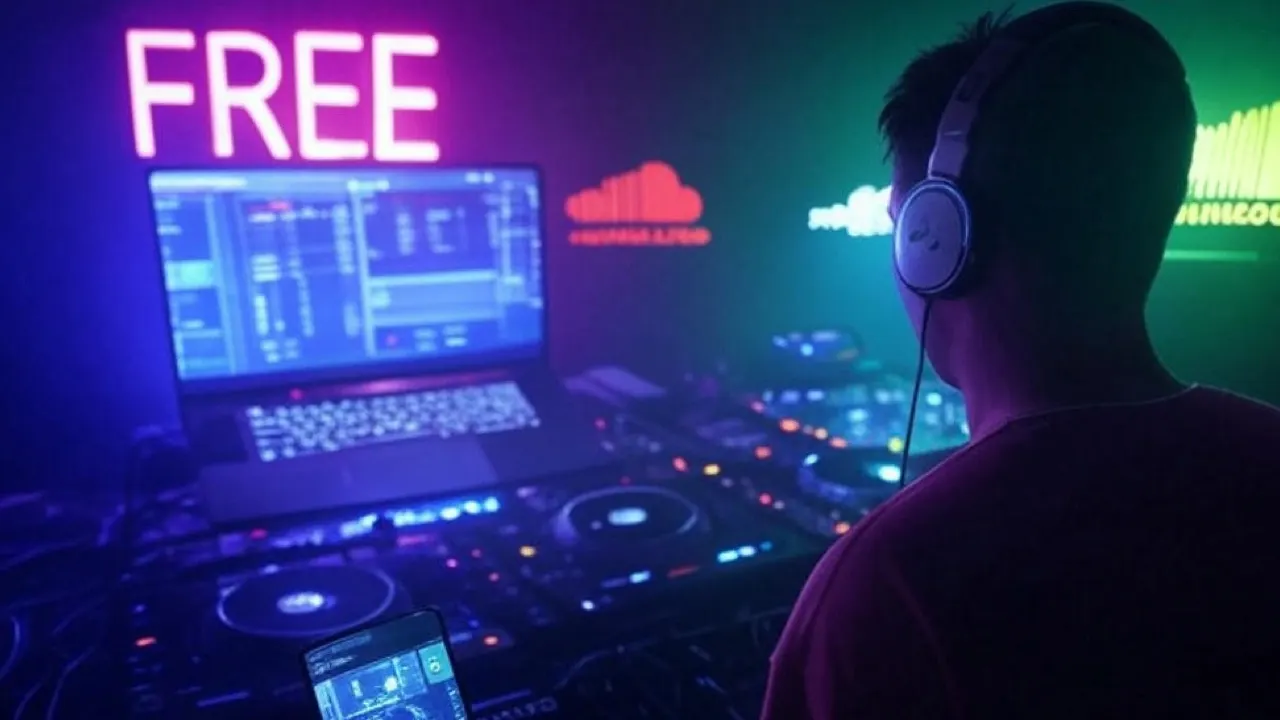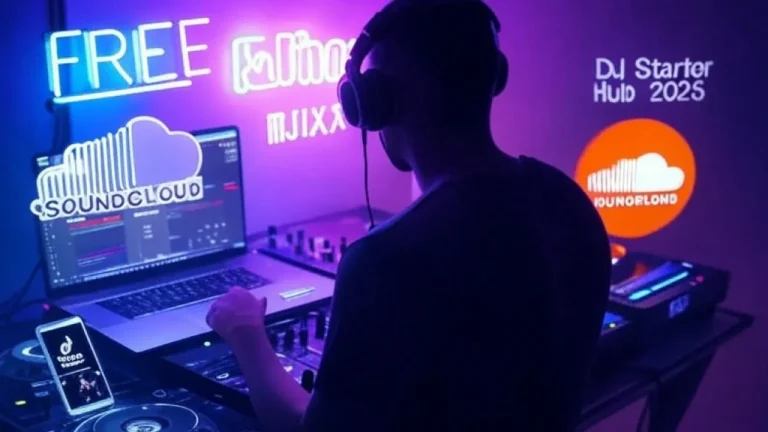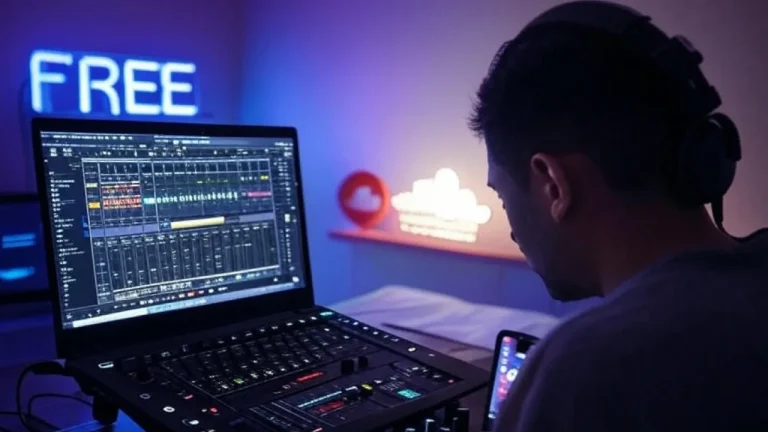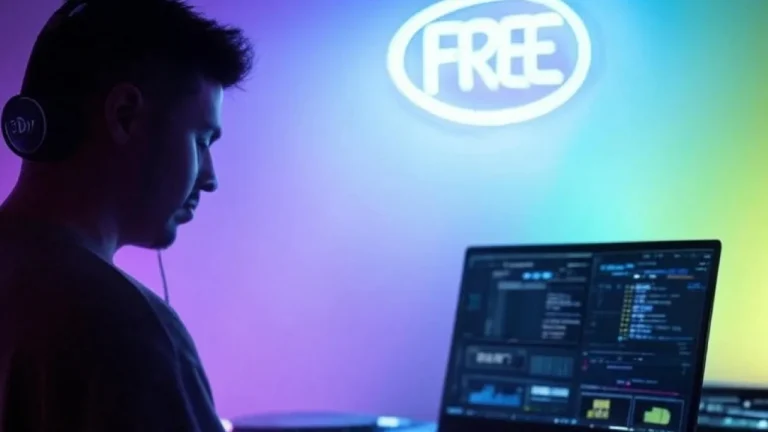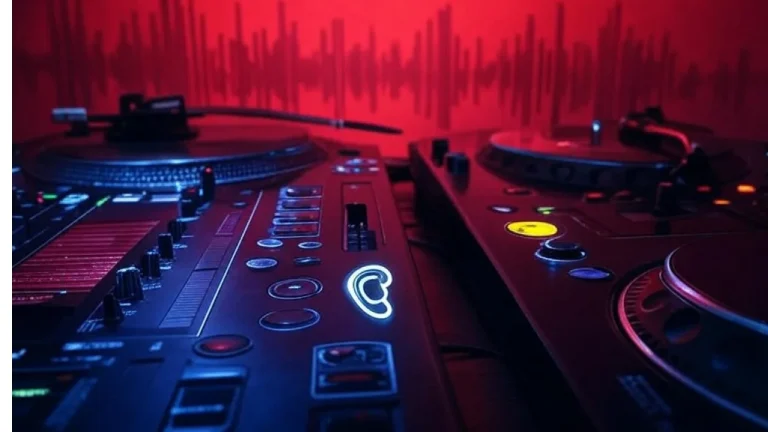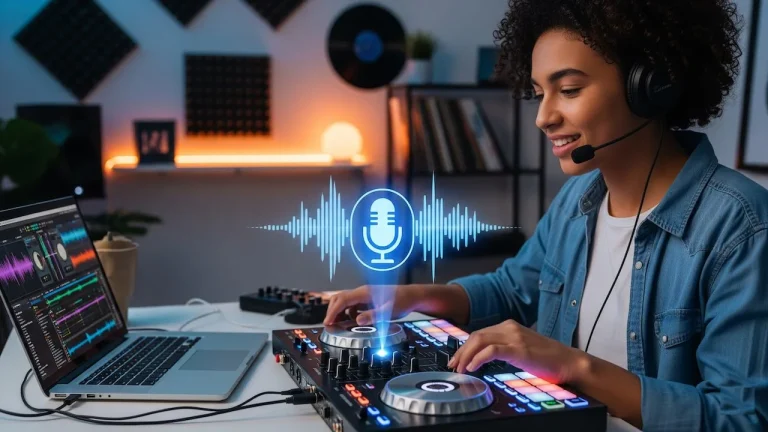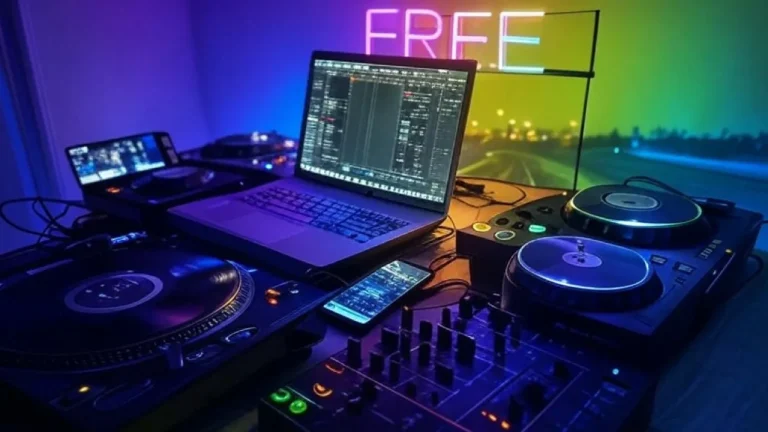Building a DIY DJ setup requires careful equipment selection, proper room acoustics, and smart budget planning. A basic home DJ setup costs between $300-$1,400 depending on equipment quality and features. DJ controllers serve as the centerpiece, with entry-level models starting at $100 and professional units reaching $1,000 or more.
Essential Equipment for Your DIY DJ Setup
Your home DJ setup needs five core components that work together seamlessly. Start with a reliable DJ controller that matches your skill level and musical style.
DJ Controller Selection
All-in-one controllers combine mixer functions, jog wheels, and performance pads in one device. Popular beginner models include the AlphaTheta DDJ-FLX2 ($99), Pioneer DDJ-400 ($249), and Numark Mixtrack Pro 3 ($179). These controllers offer essential features such as beat matching, loop controls, hot cues, and effects processing.
Audio Interface and Sound System
Professional DJ speakers deliver accurate sound reproduction across all frequency ranges. Active speakers include built-in amplifiers, while passive speakers require external amplification. Studio monitor speakers like KRK Rokit 5 G4 ($149 each) provide excellent sound quality for bedroom DJs and small venues.
Headphone Requirements
DJ headphones enable track cueing, beatmatching, and monitoring during performances. Audio-Technica ATH-M20x ($49), Sony MDR-7506 ($99), and Sennheiser HD 25 ($149) represent excellent options across different price points. Look for closed-back designs with swiveling ear cups and detachable cables.
| Equipment Type | Budget Option | Mid-Range Option | Professional Option |
|---|---|---|---|
| DJ Controller | DDJ-FLX2 ($99) | DDJ-400 ($249) | DDJ-1000 ($799) |
| Speakers | Mackie CR3-X ($99) | KRK Rokit 5 G4 ($149) | Adam Audio T7V ($229) |
| Headphones | ATH-M20x ($49) | Sony MDR-7506 ($99) | Sennheiser HD 25 ($149) |
Budget Breakdown for Different Setup Levels
Planning your DJ equipment budget helps prioritize essential components while leaving room for future upgrades. Three distinct budget tiers accommodate different needs and financial situations.
Entry Level Setup ($300-500)
Beginner DJs can start with basic equipment that provides essential mixing capabilities. This setup includes a controller with built-in sound card, budget headphones, and computer speakers or small monitors. Entry-level DJ controllers such as DDJ-FLX2 or Hercules DJControl Inpulse 200 offer excellent value for money.
Intermediate Setup ($500-1000)
Mid-range setups provide better build quality, additional features, and improved sound reproduction. This tier includes 4-channel controllers, studio monitor speakers, professional headphones, and audio interfaces with multiple outputs. Professional DJ software like Serato DJ Pro or rekordbox unlocks advanced features.
Professional Setup ($1000-2500)
Advanced setups feature club-standard equipment with extensive connectivity options, premium build quality, and professional features. This includes flagship controllers, powered studio monitors, multiple headphone options, and comprehensive cable management solutions.
| Budget Tier | Controller | Speakers | Headphones | Total Cost |
|---|---|---|---|---|
| Entry Level | $99-199 | $99-149 | $49-79 | $300-500 |
| Intermediate | $249-449 | $149-299 | $99-149 | $500-1000 |
| Professional | $599-999 | $299-599 | $149-249 | $1000-2500 |
Software and Digital Audio Workstations
DJ software platforms control music playback, effects processing, and performance features. Most controllers include free software licenses with manufacturer-specific integration and mapping.
Free Software Options
Virtual DJ LE, Serato DJ Lite, and djay Pro AI offer robust feature sets without upfront costs. These programs include essential mixing tools, automatic beat detection, and basic effects processing. Free DJ software provides excellent starting points for learning fundamental techniques.
Professional Software Upgrades
Serato DJ Pro ($99), Native Instruments Traktor Pro 3 ($99), and Pioneer rekordbox ($149) offer advanced features including video mixing, advanced effects, and expanded hardware compatibility. Professional DJ software unlocks creative possibilities through extensive customization options.
Room Setup and Acoustic Considerations
Proper DJ room setup optimizes sound quality, reduces noise complaints, and creates comfortable mixing environments. Speaker placement, room treatment, and furniture arrangement significantly impact your mixing experience.
Speaker Positioning
Position studio monitors at ear level, forming an equilateral triangle with your mixing position. Angle speakers slightly toward your listening position and maintain at least one foot distance from walls. Monitor speaker placement affects frequency response, stereo imaging, and overall sound quality.
Noise Control Solutions
Acoustic treatment reduces unwanted reflections and controls volume levels in shared living spaces. Bass traps in corners, absorption panels on walls, and isolation pads under speakers minimize sound transmission. Home studio acoustics improve mixing accuracy while respecting neighbors and family members.
Connection and Cabling Setup
Proper DJ setup connections ensure reliable signal flow between all components. Understanding cable types, signal levels, and routing options prevents common technical issues during performances.
Audio Cables and Connections
RCA cables connect controllers to speakers or audio interfaces, while XLR cables provide balanced connections for professional equipment. USB cables link controllers to computers, and TRS cables connect headphones and monitoring equipment. Audio cable management reduces interference and maintains clean setups.
Power and Safety Considerations
Power conditioners protect expensive equipment from voltage fluctuations and electrical surges. Dedicated circuits prevent overloading household electrical systems, while proper grounding eliminates noise and interference. DJ equipment power management ensures reliable operation and equipment longevity.
Performance Tips and Techniques
DJ mixing techniques develop through consistent practice with proper equipment and software tools. Focus on beatmatching, phrase mixing, and effect timing to create smooth transitions between tracks.
Basic Mixing Skills
Beatmatching aligns tempo between two tracks, while phrase mixing ensures musical compatibility at transition points. Hot cues mark important song sections, and loop functions extend mixing opportunities. DJ practice routines build muscle memory and improve timing accuracy.
Advanced Performance Features
Sampling, live remixing, and effect chains create unique performances beyond basic mixing. Performance pads trigger samples, loops, and effects in real-time. Creative DJ techniques distinguish your sets from standard track-to-track mixing.
Maintenance and Upgrades
Regular DJ equipment maintenance extends hardware lifespan and maintains optimal performance levels. Clean jog wheels, calibrate faders, and update software regularly to prevent technical issues during performances.
Equipment Care
Dust covers protect controllers when not in use, while proper storage prevents damage to cables and accessories. Regular cleaning removes dirt buildup from controls and connections. DJ gear maintenance prevents expensive repairs and ensures consistent operation.
Future Upgrade Paths
Plan equipment upgrades based on your developing skills and performance requirements. Speaker upgrades improve sound quality, while controller upgrades add features and improved build quality. DJ setup expansion should align with your musical goals and performance aspirations.
Frequently Asked Questions
A basic DIY DJ setup costs approximately $300-400, including an entry-level controller, budget headphones, and small speakers. This setup provides all essential mixing capabilities for learning and bedroom practice.
Professional results are achievable with mid-range equipment costing $500-800. Budget DJ equipment offers excellent value, while expensive gear provides additional features and build quality rather than fundamental capability differences.
Serato DJ Lite and Virtual DJ LE provide user-friendly interfaces with essential features. Most beginner DJ controllers include free software licenses that integrate seamlessly with the hardware.
A standard desk or table provides adequate space for most home DJ setups. Allow 4-6 feet width for controller and laptop placement, plus additional space for speakers and cable management.
Software-only DJing is possible using keyboard shortcuts and mouse control, but physical controllers provide much better performance experience. Laptop DJing works for practice but limits creative expression during live performances.
Basic beatmatching and mixing skills develop within 2-3 months of regular practice. Advanced techniques and creative performance skills require 6-12 months of dedicated learning. DJ skill development progresses faster with structured practice sessions.
Used equipment offers significant savings but requires careful inspection for wear and functionality. Controllers and headphones show wear more quickly than speakers. Used DJ gear can provide excellent value if purchased from reputable sources.
